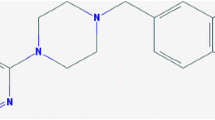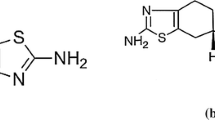Summary.
Objective/Background. To compare the safety and efficacy of pramipexole and pergolide in the treatment of mild to moderate Parkinson's disease (PD). In contrast to pergolide, a D1 and D2 dopamine agonist, pramipexole is a nonergoline dopamine agonist with D2 and preferential D3 dopamine receptor activity. This selective activity may result in clinically different effects. No prospective head-to-head comparison studies of pergolide and pramipexole have been reported.
Methods. Patients with PD who were maintained on an optimal dose of pergolide were converted to pramipexole, typically over a one-month period. Clinical assessments were performed just prior to conversion and after an optimal dose of pramipexole was achieved.
Results. Twenty-five patients were converted from pergolide to pramipexole during the period of July, 1997 to January, 1999. Three patients were lost to follow-up, and one patient died. Of the remaining 21 patients there were 11 men and 10 women, mean age was 67.3 years ± 10.0 (range 51–84). Mean duration of symptoms prior to conversion was 12.5 years ± 3.4 (range 5–19). All patients (except one) were on concomitant carbidopa/levodopa and experienced motor fluctuations. After a mean follow-up of 5.9 ± 2.9 months on pramipexole, the mean levodopa daily dose was reduced from 618.7 mg to 581.2 mg (16.5% reduction, p = 0.61). The mean daily doses of pergolide and pramipexole (in milligrams per day) were 2.1 ± 1.5 (0.15–6) and 3.2 ± 1.1 (0.75–6) respectively. Thirteen patients (62%) reported overall improvement (subjective global response) on pramipexole as compared to pergolide, 5 (24%) were unchanged and 3 (14%) reported worsening. Eighteen of the 21 patients (86%) remained on pramipexole after the study period. Although there was a slight trend toward improved scores on pramipexole, the difference was not statistically significant.
Conclusion. This open label study failed to provide evidence of superior efficacy of either dopamine agonist. It is possible, however, that while some patients may benefit more from either pergolide or pramipexole, other patients may obtain additional benefit from other DA agonists or combination therapy. Future randomized, controlled, double-blinded therapeutic trials are needed to determine which, if any, dopamine agonist is superior in the treatment of PD.
Similar content being viewed by others
Author information
Authors and Affiliations
Additional information
Received February 18, 2000; accepted July 17, 2000
Rights and permissions
About this article
Cite this article
Hanna, P., Ratkos, L., Ondo, W. et al. Switching from pergolide to pramipexole in patients with Parkinson's disease. J Neural Transm 108, 63–70 (2001). https://doi.org/10.1007/s007020170097
Issue Date:
DOI: https://doi.org/10.1007/s007020170097




